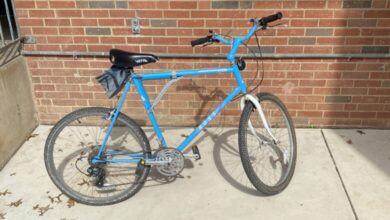What are microplastics? And how they end up on your plate?
By Ashlyn Whiteside
As a college student, it is easy to choose the simplest options when it comes to meals and snacks. Pieces of fruit, granola bars or a cup of coffee become daily habits that act as lifelines when hopping between classes. But consider this: you’ve just grabbed an apple from your fridge and you take a bite. It tastes normal to you, but how do you know that your snack is as healthy as you think?
We’ve all heard about the “stuff ” that is in food, like genetically modified organisms (GMOs), that are said to be harmful to your body and the environment. However, GMOs are not the only threat. There is another: microplastics.
Microplastics are the result of plastic decomposing in our environment. They are the little pieces, less than 5 millimeters in length, that pollute our oceans and soil.
How does this affect us? One piece may not affect anyone, but in large quantities, the pieces of plastic can damage the stomach and digestive system.
This has been observed in aquatic animals due to toxins from the plastic that sit in their stomach due to plastic’s inability to decompose. As a result, plastic contamination builds up in their system, amplifying its harmful effects.
Microplastics are making their way into our waterways and soil, which end up being consumed by all living things, including humans.
Sion Chan, a campaigner of GreenPeace, says, “When we take a bite of an apple, we are almost certainly consuming microplastics along with it,” according to Greenpeace.org.
The article goes on to describe that, “Apples had one of the highest microplastic counts in fruit, with an average of 195,500 plastic particles per gram.” We are yet to see the lifelong impact of microplastics on humans, but as plastic consumption increases, “so does the need for more research on the impacts of plastic… on human health,” (Smith, Madeleine et al.). Plastic has impacted our environment in more ways than one, but this doesn’t have to continue.
Sophomore business analytics major and Green Team member Kayelena Brimage said, “It is our job to watch what we put into the environment. We should try substituting plastics for materials like metal, wood and bamboo. When shopping for groceries try bringing your own reusable bags from home. It’s the small things that really make an impact. Be the change.”
While there is no way to reverse plastic contamination and microplastics penetrating our environment, we can certainly make a difference and stop further contamination with just a few conscious changes in our everyday lives.
Although there is no current concrete evidence that the present level of micro-plastics will affect human health, there is so much we can do to prevent the further widespread contamination of plastic in our environment.
Rider’s Office of Sustainability joins Clean Ocean Action for a “Beach Sweep” every semester where students travel to a local New Jersey beach and pick up trash and plastic contaminants from the shoreline.
After his first beach sweep, junior Musical Theatre major Andrew Smith said, “Because of what I saw on the beach sweep, I have started to lower my plastic consumption and be more conscious about waste that I can avoid.”
Like Smith, recycling and awareness of your plastic use is a great place to start. Consider adding more reusable items to your lifestyle, skipping the straw and saying no to plastic bags and plastic utensils with your to-go orders. Your impact on the environment will not go unnoticed.



